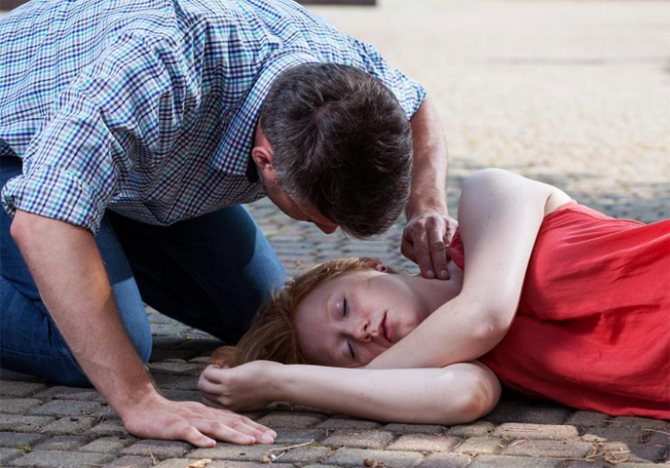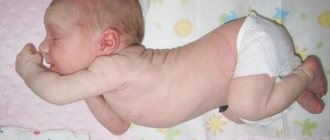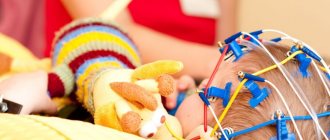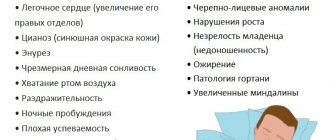Question: fainting with convulsions?
The site provides reference information for informational purposes only.
Diagnosis and treatment of diseases must be carried out under the supervision of a specialist. All drugs have contraindications. Consultation with a specialist is required! I’m 22 years old, two years ago I fainted (I had convulsions, bit my tongue, like my friends said and there was foam) I was admitted to the hospital and had an MRI (they said everything was fine) they took an x-ray and said that there was one extra cervical vertebra, after discharge they sent me to an epileptologist and prescribed Finlepsin I drank for 2 years and now I missed a few days and fainted again. Fainting begins with an attack of severe nausea, weakness, fever and viscous saliva (during an attack, I understand everything, but I can’t say anything) - it lasts about 20-30 seconds, sometimes these attacks end in fainting, but more often they pass just as abruptly as they began , I’ve been having these attacks for 6-7 years. I fainted for the first time when I was 20 years old. Before I started taking Finlepsin, I had seizures several times a week, sometimes several times a day. please help me understand what this is? They just don’t give me a diagnosis of epilepsy, since the MRI showed that there are no abnormalities.
Of course, this possible reason lies in the presence of an additional vertebra, blood circulation is disrupted and an attack occurs. You need to undergo an EEG and EchoEG and Doppler examination of the cervical blood flow, and consult again with a neurologist after receiving the results.
I am 23 years old. A month ago I fainted with convulsions. I was sent for an MRI, they discovered a pineal gland cyst measuring 04x03 cm. Please tell me, can a cyst be the cause of fainting? Thank you in advance.
Yes, a brain cyst of almost any location can cause dizziness and fainting. Your spouse needs to seek a personal consultation with a neurosurgeon to determine further treatment tactics.
Hello! I’m 15 years old. I fainted on the line (it lasted about two hours). This happened for the first time. There were CONVASIONS, the fainting lasted about 30 seconds, they sent me for an MRI and it showed that everything was normal, tell me if overwork could be the cause of the fainting.
In this case, it is necessary to conduct an EEG of the brain and consult with a neurologist and epileptologist; if organic pathology of the brain is excluded, then most likely the cause of the onset of seizures was overwork. Read more about the causes of seizures in a series of articles by clicking on the link: Seizures.
Hello, my daughter is 25 years old, a month ago she fainted with convulsions, there was no foam. The attack lasted about 1 minute. After the attack, weakness, dizziness, a few days later there was tingling in the limbs. After 15 days, an attack occurred again (of the same type), and 2 hours later it happened again. MRI is normal, EEG - Conclusion: moderate cerebral disorders are more pronounced in the right hemisphere, ultrasound of the BCA is normal, ultrasound of the br. cavities are normal, tests are normal - (leukemia - 8.8), on inf.zab. all tests were negative.
In this situation, a vegetative-vascular crisis cannot be ruled out, so I recommend consulting personally with a neurologist, measuring blood pressure over time, and taking a blood sugar test to rule out hypoglycemia. You can get more detailed information on the issue you are interested in in the corresponding section of our website by clicking on the following link: Fainting
I’m 26, yesterday I fainted. I got up from the chair, everything in front of my eyes began to get dark, then suddenly I started sweating, felt my body temperature drop sharply, then my whole body just started shaking, like a cramp probably. I tried to convince myself that I wouldn’t pass out, in the end everything went completely dark, I couldn’t say anything, but I heard everything. After 2 minutes everything went away. Please advise which doctor should I go to? The last time this happened was when I was 12 years old, when I had the flu, my temperature was 40, after fainting the temperature dropped sharply to 36, felt relief.
There are many reasons for fainting, in particular, vegetative-vascular dystonia, arrhythmia, oxygen starvation, overwork, neurasthenia, anemia, etc. can lead to such conditions. I recommend that you undergo an examination: do an ECG, EEG, take a general blood test and personally consult with a neurologist and cardiologist. You can find out more detailed information on this issue in the thematic section of our website by clicking on the following link: Fainting. You can also get additional information in the following section of our website: Neurologist and neuropathologist
I am 16 years old. For about a whole year (and now) I have been having attacks. An attack lasts about 30 seconds. After an attack, I sometimes bite my tongue until it bleeds, my whole face (also sometimes) becomes covered with small dots (after 2 days they go away), and Previously, there was a little foam at the mouth. Before an attack, I feel like my head turns sharply little by little to the left, and I begin, excuse the word, to become stupid. I don’t understand what I’m doing at all and what to do. The attacks occur only in the morning (up to about 3 o’clock). Previously they happened once a week, but now, after taking Magnesium B6, they happen once a month, or 2 months. I had an MRI, EEG, and many other things, but the doctors concluded that this is the “Arnold-Chiari Malformation.” That the cerebellum is supposedly shifted somewhere and puts pressure on the nervous system. I went to Minsk, to some center for the Nervous System. And they said that this is just a transitional age, and there is no need to do anything. just wait. Now I don’t take any pills, and there are no changes. What do you tell me to do?! Oh yes. The most important thing is that I don’t remember some moments from my life..
Seizures in adolescence
— Can convulsions be a companion to growth, that is, they occur in adolescence and go away over time?
— Of course, after all, during puberty (puberty is the period of puberty, usually 12-16 years for girls and 13-18 years for boys), the body undergoes restructuring, and it happens that it cannot cope with the stress. At this age, what is more common is not even convulsions, but convulsive fainting (pulling and going limp), as well as simply fainting - going limp and dripping like ice cream. They occur when there is strong excitement (boys are afraid of injections, for example). They happen from standing for a long time (girls faint at school assemblies on September 1).
” To exclude suspicion of some other disease, parents need to know that a person “enters” into fainting, and adolescents describe their condition quite clearly: there is a feeling of lightheadedness, dizziness, ringing in the ears or congestion.
If everything happens this way, then it will go away with age, but a consultation with a neurologist is, of course, mandatory. Parents just need to understand that fainting is not a reason to panic.
— Which teenagers are at risk?
— These are, of course, kids who very quickly “went up” and grew up. And children who do not have physical and motor activity, those who sit at school all day and then at home in front of the computer.
” — Dear Parents! Remember that for the treatment of such cramps and fainting, the most important thing is vascular training, namely physical activity and hardening procedures.
-Elena Nikolaevna, what should you do if a teenager still experiences periodic convulsions, but doctors find no abnormalities?
- Don’t give up, don’t let things take their course, but look for reasons! For teenagers, everything is already the same as for adults. Non-epileptic seizures should be dealt with by doctors from a variety of specialties:
heart rhythm disturbances detected on the ECG - see a cardiologist;
hypoglycemia (low blood sugar) - see an endocrinologist. After all, there are teenagers who simply don’t eat (they don’t have time, they don’t want to, they lose weight), and there are children with a predisposition to diabetes;
hypocalcemia - low calcium level - see a physician. And a note for mothers: be sure to monitor the intake of calcium-containing medications and vitamin D in all children, from infants to adolescents. By the way, with hypocalcemia, cramps are painful and prolonged.
rare, but there is a tumor of the pancreas - insulinoma, which can also cause seizures - see an oncologist;
if a teenager has a bad electroencephalogram (EEG), see an epileptologist.
” — When complaining of seizures, a conscientious doctor will always recommend doing an ECG (electrocardiogram), daily Holter ECG monitoring, EEG (electroencephalogram), donating blood for sugar and microelements: calcium, magnesium, phosphorus.
There are many causes of seizures, you need to be examined, look for and find them, and then treat them and create a healthy and joyful life for yourself and your children! Health to you and your children!
Causes of convulsive fainting
As a rule, for the development of such a condition, there are predisposing factors that have a direct impact on the human body.
The most common factors that may be accompanied by seizures are:
- physical and mental trauma;
- pain attack, fear, prolonged stay in a stuffy room;
- sudden change in body position (from horizontal to vertical);
- drop or increase in blood pressure;
- heart attack, arrhythmia;
- in some cases, an attack occurs due to a malfunction of internal organs (cardiovascular diseases, diabetes, central nervous system disorder, vascular problems, etc.).
Quite often, loss of consciousness, accompanied by convulsive syndrome, occurs as a result of tumor-like neoplasms in the brain and epilepsy.
The etiology of a neuroepileptic attack is not fully understood, but, as a rule, this condition is accompanied by stroke, anoxia (hypoxia) of the meninges, which leads to loss of consciousness.
Causes
Fainting occurs due to a sharp spasm of blood vessels in the brain, as a result of which the supply of blood flow and oxygen to this sector of the body slows down. A state occurs, defined by doctors as motionless, with minimal visible breathing. The state of fainting can be temporary (brief, for 5-10 minutes).
At the same time, a coma state lasts for many hours, calculated in days. Resuscitation action is required by collapse (translation from Latin falling, fallen) - an extreme phase characterized by a drop in blood pressure and heart rate, as a result of which the blood supply (blood circulation) of vital organs deteriorates.
The etiology of syncope depends on the underlying cause:
- Swelling of brain tissue, hydrocephalus. More often when introducing viral or infectious intoxication. The clinic is typical for severe forms of acute respiratory viral infections, acute respiratory infections, influenza, encephalitis, meningitis, at a temperature (over 39 degrees), heat, delirium in cold formations of double pneumonia, peritonitis of the abdominal cavity, acute catarrh of the upper respiratory tract, tonsillitis of the larynx, scarlet fever;
- Polit cranial trauma. Compression, severe bruises, blows with concussion, fractures of the base of the skull;
- Displacement of the vertebral discs with pinching of nerve endings;
- Asphyxia (suffocation). Getting an object into the nose or throat;
- Thermal, solar overheating;
- Being in a stuffy, enclosed room without sufficient air flow, motion sickness in a car;
- Stress, shock, fear, emotional turmoil;
- Malnutrition, exhaustion;
- Dehydration due to diarrhea (watery diarrhea).
The origins are numerous, and the consequences equally insidious. Frequent fainting does not go unnoticed for a child. A tomography examination reveals adhesions of spasmodic contractions, microcracks, and ruptures of blood vessels on the walls of brain vessels, as after epileptic seizures. In the future, this algorithm will result in headaches, attacks of nausea, dizziness, and memory impairment.
Types of fainting and their consequences
Spontaneous loss of consciousness can be short-term and persistent. As is correct, short-term fainting does not pose a threat to life and lasts no more than a few minutes.
Short-term fainting can occur with the following diseases:
- state of hypoglycemia (sharp decrease in blood glucose);
- epilepsy;
- ONMK;
- a sharp change in blood pressure;
- minor brain injuries (concussions, bruises).
Persistent loss of consciousness is accompanied by more dangerous consequences, and even if timely assistance is provided, a threat to the patient’s life remains. The development of persistent fainting is possible as a result of the following factors:
- extensive strokes and cerebral hemorrhages;
- cardiac arrest and arrhythmia;
- subarachnoid hemorrhages resulting from aortic ruptures;
- various states of shock;
- severe TBI;
- acute poisoning of the body;
- heavy bleeding due to damage to internal organs.
In addition, the pathological condition may be the result of asphyxia with prolonged oxygen starvation.
Factors influencing the development of the disease
Loss of consciousness depends on the cause of its occurrence:
Hyperthermia
Quite often, the cause of seizures, which are accompanied by loss of consciousness, is high body temperature. Most often, hyperthermia with convulsions occurs in childhood. For adult patients, the temperature limit is 40 degrees. In children, convulsions can occur at a temperature of 38-39 degrees. In this case, the symptoms of the pathological condition appear suddenly. The child tenses, his head is thrown back, and his gaze is fixed at one point, then a convulsive attack occurs.
Pregnancy
Loss of consciousness, accompanied by convulsions in pregnant women, is considered one of the most dangerous complications, the result of which can be premature birth, disturbances in intrauterine development of the fetus, etc. This condition reminds us of coma and with frequent fainting, there is a possibility of death for the woman.
Alcohol intoxication
This condition does not appear very often, but is considered a rather serious problem in medicine. This situation is accompanied by sudden pallor of the patient, he loses consciousness with the onset of a convulsive attack. Loss of consciousness can be sudden, and after the attacks the patient can sleep soundly for 6-7 hours.
Quite often, alcohol intoxication takes on a chronic form, recurring regularly. Uncontrolled consumption of alcohol can provoke the development of irreversible processes in the brain, which cause fainting, accompanied by convulsions, even in the absence of alcohol intake.
Development of convulsive syndrome in children
Sudden fainting in children, accompanied by convulsions, requires mandatory medical intervention, since the consequences of such symptoms can be unpredictable. Often the cause of this condition is traumatic brain injury. Brief loss of consciousness is complicated by sudden bleeding from the ears and mouth. In this case, emergency hospitalization of the child is necessary to clarify the diagnosis and further treatment.
Differences between epilepsy and convulsive syncope
When diagnosing, it is necessary to differentiate epilepsy from convulsive syncope, since both of these conditions are accompanied by changes in blood pressure and pupil dilation. As a rule, after loss of consciousness has occurred, the patient cannot remember what preceded such a state.
However, there are differences between an epileptic seizure and a convulsive seizure:
- loss of consciousness may be accompanied by warning signs such as dizziness, ringing in the ears, headache and weakness. However, this condition never occurs during sleep, unlike epilepsy, the attack of which occurs completely unexpectedly. It can occur during movement, even at night when a person is sleeping;
- if the patient loses consciousness as a result of psychological and physical influences, he is able to subsequently talk about them, in contrast to an epileptic attack, the cause of which patients cannot explain. An epileptic attack is always accompanied by involuntary urination, in contrast to ordinary fainting;
- convulsive manifestations vary in form: with the development of fainting, convulsions can be clonic. Muscle contraction and relaxation occurs very quickly. Epileptic fainting is characterized by the development of generalized tonic-clonic forms, in which the muscle group is constrained by a spasm for 3-5 minutes, followed by a transition to the clonic phase.
Most often, fainting is short-lived. In this case, the patient’s consciousness returns within a few seconds, but retardation remains.
Symptomatic seizures
In addition to epilepsy, loss of consciousness with leg cramps develops in a number of diseases. In this case, seizures have distinctive features.
Although it is difficult to verbally confuse an attack of epilepsy and a fit of hysteria, in the first seconds it is often difficult to navigate. Both conditions are accompanied by loss of consciousness and lack of reaction to what is happening. Remember the important distinguishing features.
Difference between fainting and epileptic seizure
- When fainting, the patient feels weakness, dizziness, ringing in the ears, and palpitations. An epileptic attack occurs in the midst of complete external well-being or after an aura. Sometimes lying down is enough to prevent fainting. With epilepsy, the horizontal position of the patient does not help in any way to prevent a seizure, which can develop at any time in any place.
- Fainting rarely begins when a person is lying down or sleeping. Unlike fainting, an epileptic seizure can develop at rest, even during sleep.
- In case of fainting, the patient will be able to independently report what was the cause - psychological stress, overwork or exposure to physical factors. The causes of an epileptic seizure are not outwardly noticeable; the patient may not associate it with anything.
- The pattern of leg movements during fainting and epileptiform seizures shows differences. When fainting, there may be no convulsions at all, or the spasms may be tonic-clonic in nature, alternately contracting and then relaxing. In epilepsy, the tonic phase is replaced by the clonic phase.
- When fainting, loss of consciousness may not occur - the patient is able to remember everything, as if in a fog.
Hysterical attack
With certain personality and character characteristics, increased nervous excitability, a hysterical attack develops, outwardly reminiscent of an epileptic one. A number of differences are described:
- A fit of hysteria develops after a conflict, receiving unpleasant news or a nervous shock. Before the onset of a hysterical attack, the patient is able to scream or cry.
- During a hysterical attack, the patient almost never experiences a deep loss of consciousness. The patient rarely falls, hitting his face on furniture or sharp hard surfaces. Usually the person falls gently to the floor without harming himself.
- The movements of the limbs in a patient with a hysterical attack are different; they do not look like convulsive contractions, but rather like gesticulation, they look somewhat theatrical and pretentious.
- During a hysterical attack, patients are able to tear their clothes, scratch their chest, face, and shout out individual phrases.
- A hysterical attack is not characterized by tongue biting, urination, or facial injuries.
- The duration of a hysterical attack ranges from 5 minutes to several hours, being a distinctive feature.
- After the attack ends, the patient retains a memory of what happened.
- A characteristic feature is the preservation of the reaction of the pupils to light, which does not happen during an epileptic attack.
First aid
In the case when the patient's unconscious state is accompanied by a seizure, it is recommended to immediately begin providing first aid:
- First of all, you should call a medical team;
- if there is a clear cause of loss of consciousness, measures should be taken to eliminate it;
- The patient should be placed on a horizontal surface with his legs elevated using a pillow or bolster. This position will ensure blood flow to the head and normalize the general condition of the patient;
- to prevent the tongue from sinking and biting, it is necessary to wrap a wooden spoon or any available item in a napkin or thick cloth and place it between the victim’s teeth;
- It is important to ensure that vomiting does not occur, which can lead to asphyxia. To prevent this, you need to put the patient on his side, holding his head.
A person who is unconscious must be sprinkled with cold water and provided with access to fresh air by unbuttoning his clothes and opening the window, and also allowing him to sniff a swab with ammonia.
Prevention
If certain preventive measures are followed, the frequency of fainting can be significantly reduced.
Prevention includes:
- prevention of stressful situations, feelings of hunger and increased fatigue;
- dosed physical activity to avoid overwork;
- hardening procedures;
- normalization of rest and work schedules;
- mandatory night sleep of at least 8 hours;
- You should not suddenly change your body position from horizontal to vertical to prevent orthostatic collapse (loss of consciousness);
- it is important to maintain normal blood vessels and control blood pressure; a sudden change in blood pressure can cause fainting;
- Particular attention to one’s own health must be paid to patients with heart diseases that are accompanied by arrhythmia, since in this case fainting can result in the death of the patient.
It should be noted that in case of a single case of loss of consciousness with convulsions, it is not necessary to go to a medical institution, although you can do this for your own peace of mind. However, if this situation recurs and especially systematic fainting, seeking medical advice is mandatory, as this may indicate signs of serious diseases in the body that require diagnosis.
It is impossible to say with certainty whether fainting conditions are dangerous or not. To do this, you need to find out the nature of the development of this condition. A detailed medical history and consultation with a highly qualified specialist, including a psychotherapist, are of great importance, since quite often the provoking cause of the pathological condition is psychogenic factors.
When there is a sharp decrease in blood flow in the human brain, he loses consciousness. Quite often, loss of consciousness is accompanied by convulsions. During a fainting state, people lose their reaction to external stimuli, and they lose the ability to think logically and answer someone's questions.
Epilepsy, fainting, hysteria
Theoretically, it is difficult to confuse convulsive syncope and epilepsy. But in practice, it is not always possible to immediately differentiate them. Both conditions are accompanied by a deep loss of consciousness, convulsive movements, changes in pressure, reaction of the pupils, urinary or even fecal incontinence is acceptable, and the subsequent state of health is characterized as general weakness.
But there are a number of signs that are typical for each of these two conditions.
- Loss of consciousness during fainting is preceded by characteristic sensations of weakness, dizziness, ringing in the ears, and sometimes it is enough to lie down to prevent it or at least reduce the likelihood of injury from a fall. Although epilepsy is characterized by auras indicating the approach of an attack, a minor attack begins suddenly, a person may fall on the spot while walking, and a change in body position does not have a beneficial effect.
- Epilepsy can begin when a person is lying down, and even sleeping, meanwhile, ordinary fainting extremely rarely begins in a horizontal position.
- Loss of consciousness is always provoked by external factors: physical or psychological stress, which the victim himself can tell about. But the causes of an epileptic seizure are not clear to the patient, giving the impression that they are completely spontaneous.
- There are different types of convulsive movements. Convulsions during fainting are usually clonic in nature, the muscles contract and relax alternately, and very quickly. Epileptic seizures are characterized by generalized tonic-clonic forms, when a muscle group is constrained by a spasm for 3 minutes or more, and then is replaced by a clonic spasm.
- Fainting rarely lasts long, consciousness returns after a few seconds, less often after a couple of minutes, and the victim often remembers what happened around him, although these events are perceived “as if in a fog.”
Increased excitability of the nervous system also provokes the development of hysterical seizures, which, starting with convulsive movements, can end in fainting. In such cases, we can only talk about the “image” of convulsions, since the twitching of the limbs does not follow the usual alternations of tonic and clonic spasms for epilepsy, the fall is unhurried and rarely causes harm to the victim.
The diagnosis of convulsive syncope can only be confirmed by MRI and EEG diagnostics, which will differentiate between epilepsy and a number of other brain diseases. If a person repeatedly falls into an unconscious state, accompanied by muscle contractions, then a full medical examination of the body cannot be postponed.
When there is a sharp decrease in blood flow in the human brain, he loses consciousness. Quite often, loss of consciousness is accompanied by convulsions. During a fainting state, people lose their reaction to external stimuli, and they lose the ability to think logically and answer someone's questions.
Fainting is a loss of consciousness for a short period. Typically, fainting lasts from 5 seconds to 10 minutes. The longer the fainting, the more dangerous it is for a person’s life and the more serious reasons it is caused.
Causes of loss of consciousness with convulsions
Fainting in itself is dangerous, but if convulsions are also observed at this time, then the cause of loss of consciousness can be very serious. The cause of seizures is the stimulation of cells in the cerebral cortex, which can lead to involuntary muscle contractions.

The most common causes of loss of consciousness with convulsions are:
- Increased intracranial pressure in a person.
- Various oncological diseases or brain hematomas.
- Constantly keeping the neck muscles in a tense state.
- Received injuries or concussion.
- Deformation of the cervical vertebrae (deformation can be either acquired or congenital).
- Infectious diseases that affect brain tissue.
- Constant stress or nervous breakdown.
In young children and adolescents, loss of consciousness with convulsions may occur due to autonomic dysfunction.
Causes of fainting with convulsions, signs of convulsive loss of consciousness in epilepsy
Convulsive fainting is one of the most common pathological conditions. As a rule, it occurs due to a sharp decrease in blood supply to the brain. The approximate duration of loss of consciousness varies from 5-10 seconds to a quarter of an hour. At the same time, a person’s prolonged stay in this state can be life-threatening.
Pregnancy and loss of consciousness with seizures
During pregnancy, women often experience dizziness and various types of ailments. However, if convulsive fainting occurs in this case, this is evidence of the occurrence of serious complications.
In some cases, such loss of consciousness ends in a state close to comatose. In addition, the risk of premature birth increases sharply, creating a danger to the health and life of the child.
In case of convulsive loss of consciousness, a woman needs to consult a specialist, since frequent repetitions of this condition can lead to death.
First aid for loss of consciousness with convulsions
During loss of consciousness, which is accompanied by convulsions, the following actions must be taken:
- It is necessary to eliminate the cause that led to loss of consciousness.
- It is necessary to place the person in a horizontal position. The head should be lower than the body, and the legs, on the contrary, higher.
- Lay the person on their side. This action is performed to prevent the tongue from retracting and to prevent the person from choking on his own vomit (if the gag reflex is activated). The person will have to be held, because due to convulsions he may roll on the ground.
- It is necessary to create irritating conditions for the skin of a person who has lost consciousness. To do this, you need to spray his skin with cool water, wipe him with water behind his ears, and pat his cheeks. It is imperative to provide the victim with a flow of air; to do this, the collar is unfastened or stretched. If someone present has ammonia, you can give it to the person who has lost consciousness to smell it.

Differences between epilepsy and loss of consciousness with seizures
Epilepsy is a disease of the nervous system that is characterized by seizures, convulsions, and, as a result, loss of consciousness. Fainting with convulsions is a loss of consciousness for a short period, which is accompanied by convulsions.
Although these concepts are somewhat similar, they are fundamentally different:
- Fainting occurs as a result of exposure to some irritating factors. Before loss of consciousness, symptoms such as dizziness, severe weakness, and tinnitus are observed. To prevent fainting, you need to lie down. Epilepsy is not accompanied by any symptoms. The man just falls. Falls can occur while walking or running.
- Fainting with convulsions will never begin if a person lies in a horizontal position. Epilepsy can occur even while a person is lying down or sleeping.
- Fainting with convulsions is always provoked by some external or psychological factors. Epilepsy occurs without any provoking factors.
- Convulsions during normal loss of consciousness are clonic in nature, the muscles either relax or contract. In this case, the process occurs very quickly. During epilepsy, a tonic-clonic form of seizures is observed. Accordingly, the muscles may stiffen for a few minutes and then relax.
- Fainting never lasts long. As a rule, a person remembers everything that happened around him. An epileptic seizure can last for quite a long time, and after it the person does not remember what happened to him.










